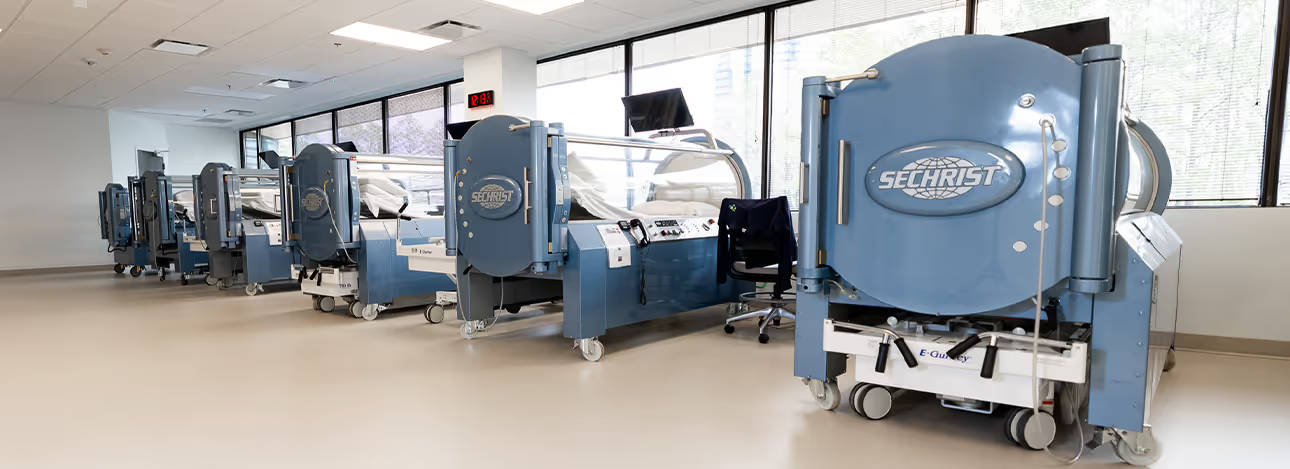How Can Hyperbaric Oxygen Therapy Help Bone Infections?
When an infection involves high-risk areas like the spine, skull, or sternum, or when the infection hasn't improved after six weeks of treatment, Hyperbaric Oxygen Therapy (HBOT) serves as a crucial adjunctive therapy.
Hyperbaric Oxygen Therapy involves breathing pure oxygen in a pressurized chamber, significantly increasing oxygen levels in the blood and tissues. This enhanced oxygen delivery is critical in healing bone infections, particularly when the blood supply to the affected bone is compromised, as is often the case in CROM. By increasing the amount of oxygen available to the infected area, HBOT accelerates tissue repair, enhances the effectiveness of antibiotics, and stimulates the body's natural healing processes. Furthermore, it helps promote the growth of new blood vessels, which is essential for overcoming infection and supporting tissue regeneration.

One of the most common presentations of CROM occurs in long bones following trauma and in diabetic foot ulcers (DFU), where about 20% of patients referred to wound centers will develop osteomyelitis. In these cases, if patients do not respond to a standard course of antimicrobial therapy and surgical debridement (if feasible), they should be considered for adjunctive HBOT. As part of a multi-disciplinary treatment plan, HBOT plays a crucial role in improving healing rates and preventing complications like amputation or further tissue damage.
Our HBOT offers a promising solution for patients with CROM, especially in critical areas or when standard treatments fail. It enhances oxygenation, reduces infection, and fosters tissue repair, ultimately supporting a more effective and comprehensive recovery.




.svg)






